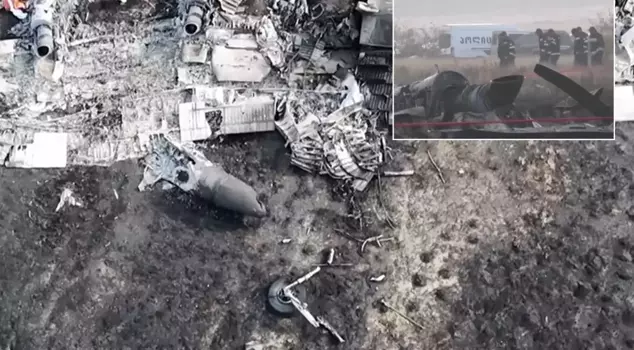
17.11.2025 11:58
As a result of a C130 military cargo plane belonging to the Turkish Air Force (THK) crashing near the Georgian border, 20 of our soldiers were martyred. According to the initial technical findings of the accident, it was reported that a loss of control occurred due to a chain reaction of consecutive engine failures, and the plane crashed to the ground in three large pieces.
```html
The first technical assessments regarding the cause of the crash of the C130 aircraft belonging to the Turkish Air Force, which took off from Ganja, Azerbaijan, to Merzifon, have emerged.
ENGINE MALFUNCTIONS OCCURRED IN A CHAIN REACTION, THE AIRCRAFT LOST CONTROL
The C130 military transport aircraft, affiliated with the Turkish Air Force, took off from Ganja, Azerbaijan, heading to the 5th Jet Base in Merzifon. No technical issues were observed during the takeoff and climb phases. Even at the moment of takeoff, which requires the most power, the performance of all engines was assessed as normal.
Shortly after, the aircraft reached an altitude of 22,000 feet (7,333 meters) in Georgian airspace and proceeded to level flight on its route to Turkey. However, control was completely lost after this point. 20 soldiers on board the aircraft, which was carrying UAVs and various military supplies for the anniversary events of the liberation of Karabakh, were martyred.
"THE FIRST ENGINE WENT TO FEATHER, THE SECOND ENGINE EXPERIENCED OIL PRESSURE MALFUNCTION"
According to the technical information shared by Hürriyet writer Uğur Cebeci, the first step of the accident was the malfunction of the fourth engine of the aircraft. With the engine going to feather position, the energy balance of the aircraft was disrupted. Subsequently, the aircraft entered a sudden climb.
During this time, an oil pressure malfunction was detected in the second engine. The abnormal acceleration of the engine under excessive load created a strong vibration (resonance). This vibration caused the engine to detach. The detached parts struck the fuselage of the aircraft, flipping it over.
DETACHED PROPELLERS CUT THE FUSELAGE, THE COCKPIT SEPARATED
As the aircraft began to fall nose-first, it was reported that the tail section detached. At the same time, the propeller parts that broke off from the number 2 engine cut through the fuselage, separating the cockpit section.
Since the mechanism that changes the propeller blade angle did not work, the engine could not exit the abnormal condition, and control of the aircraft was completely lost.
Following these developments, the C130 entered a spin (uncontrolled descent) and crashed to the ground. It was stated that the aircraft separated into three main pieces: the cockpit, the middle fuselage, and the tail section, resembling a production schematic.
```